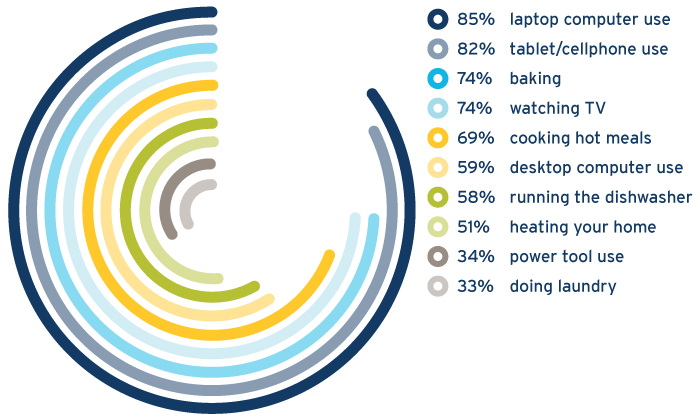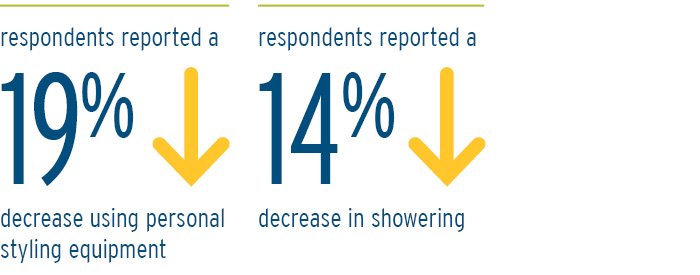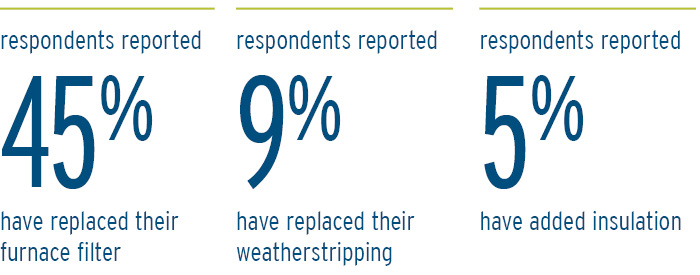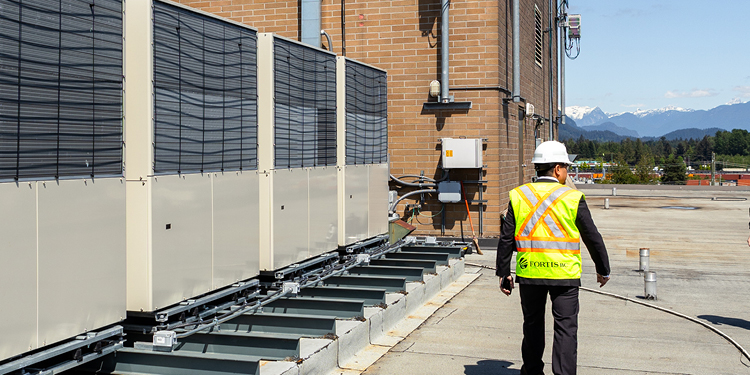How much energy do you need to stay home during a pandemic?
June 29, 2020
With all the bread making, home cooked meals and DIY projects that have kept us busy while we’ve been following the COVID-19 stay-at-home measures, we were curious to know how this may be affecting energy use in homes.
In fact, it’s more than curiosity for us. We want to make sure we understand your energy needs so we are well prepared to support you through this unique situation and beyond.
We surveyed our customers and looked at some of our own data. Here’s what we found out.
Are people using more natural gas and electricity?
We were surprised to find that, despite the extra dishes and loads of laundry, energy use on both our natural gas and electricity systems was on par with previous years. We dug deeper to see if there was a shift from commercial to residential use as many business customers suspended their operations and people were following the stay-at-home advice of health authorities.
We compared energy use in April, the most significant period of COVID-19 restrictions, to previous years. Turns out that residential customers were using about the same amount of energy overall. Residential natural gas use was on par with previous years; residential electricity use on our system was only slightly higher than last year.
Although overall use was the same, we know that energy needs per household are as varied as the preference for sourdough over whole wheat. Our survey helped us better understand the changes taking place that could lead to changes in a home’s energy needs.
Customers are baking more bread
The rumors are true -- people love fresh baked bread during a pandemic.
We asked customers what activities they’ve increased since they began staying home; baking and watching TV topped the list after spending more time on laptops and mobile devices.
About half of our survey respondents had at least one person working outside of the home prior to the COVID-19 measures. Many of these customers reported an increase in high-energy use activities, such as home heating, using hot water and cooking food.
Activity increases of people who are home due to COVID-19 restrictions

Data based on a May 2020 survey of FortisBC residential customers, 966 responses.
By comparison, very few people reported decreases in these activities, with two notable exceptions:

The energy behind the scenes
If you, too, have been trying to unravel the science behind sourdough bread, you may have found yourself washing clothes covered in flour and scrubbing more than a few baked-on dishes.
All of that takes some energy. While the smell of fresh baked bread is worth every kilowatt, gigajoule and calorie, here are some fun facts about the energy use behind the scenes:
- Baking bread for about an hour at high heat (450 – 500 degrees) will take around 1.5 kilowatt hours (kWh) of electricity for a cost of 18¢ or about 0.005 gigajoules (GJ) of natural gas, for a cost of about 4¢. 1
- Using a dishwasher is the clear winner over washing dishes by hand. A new ENERGY STAR® dishwasher uses about a quarter as much energy as washing dishes by hand and saves nearly 26,400 litres of water a year – that’s equivalent to 87 standard bathtubs full of water. 2
- A 45-minute dryer cycle uses approximately 4.75 kWh for a cost 57¢ or about 0.017 GJ of natural gas, for a cost of about 12¢. 3
The energy-savvy are still saving
We were impressed to see that in addition to baking, a number of people were using the extra time at home to complete some energy-saving home improvements:

We also found that people continued to look for ways to save energy. Here’s the percentage of people we surveyed who are already doing or planning to do these energy-saving activities as the weather warms up.
| Percent of respondents | Who are already doing or planning to do this energy-saving activity: |
|---|---|
| 92% | Only running full loads of laundry |
89% | Closing your blinds on sunny days |
86% | Avoiding use of the oven at the hottest part of the day |
81% | Only running the dishwasher when full |
79% | Washing most laundry in cold water |
50% | Hanging most laundry to dry |
48% | Monitoring energy use online |
47% | Setting ceiling fans to run counter clockwise |
45% | Turning off the heat cycle on your dishwasher |
42% | Turning off the pilot light in your gas fireplace |
29% | Setting your air conditioner or heat pump to above 25 °C |
How has your energy use shifted?
If you’re like me, you enjoy a good surprise, but never on your utility bill. If you’re curious how the extra time at home has shifted your household’s energy use, you can compare your use to last year and find other tools to help monitor your use in Account Online. We encourage you to check it out.
We also have no-cost tips to save energy used for hot water and cooling, how-to videos featuring easy, low-cost, upgrades like replacing a showerhead and suggestions for easy upgrades you can do now to prepare for the fall and winter heating season. Check out more energy-savings tips for your home.
2 https://www.energystar.gov/productfinder/product/certified-residential-dishwashers/results
3 Specifications based on FortisBC’s 2017 Residential End Use Survey Data and June 2020 electricity and natural gas rates. Natural gas use assumes the same efficiency as electricity, but may vary by appliance. Calculations based on consumption only.



